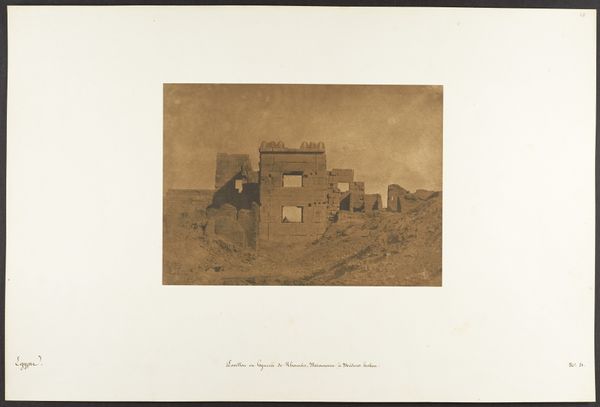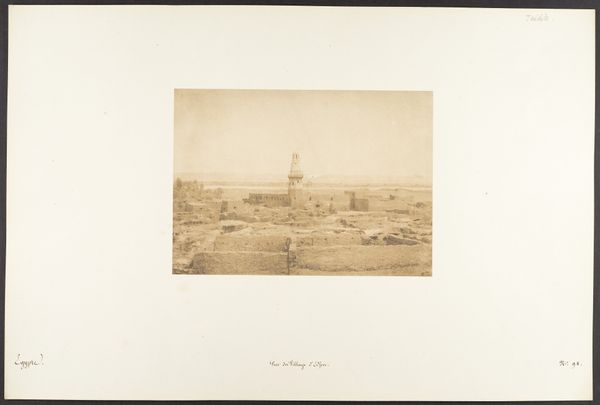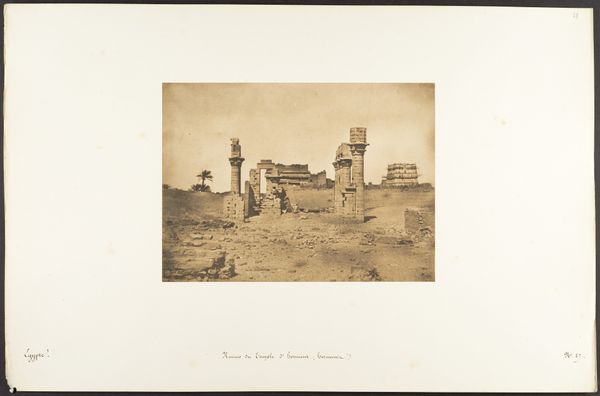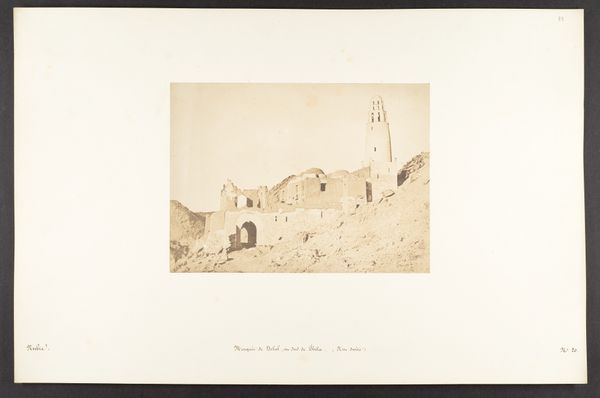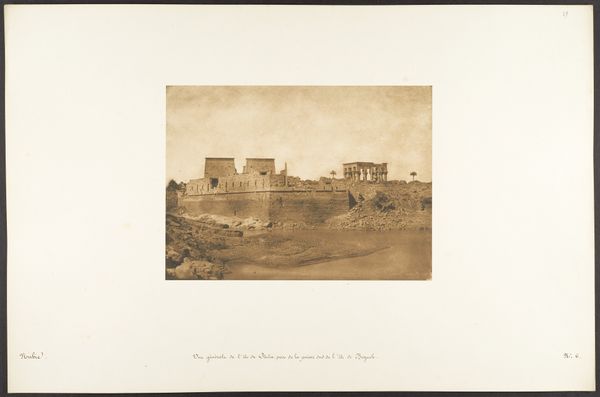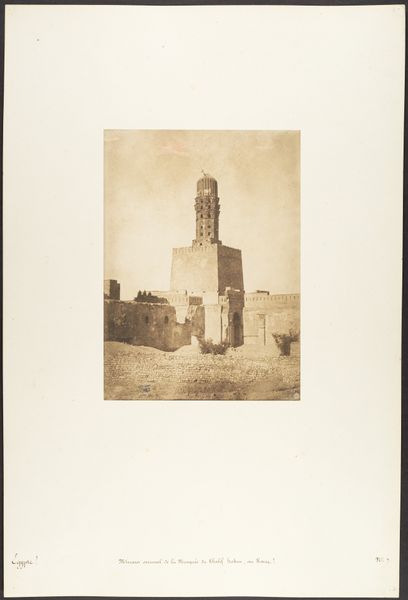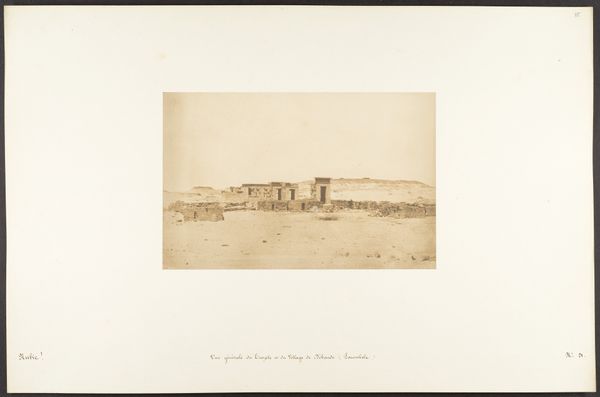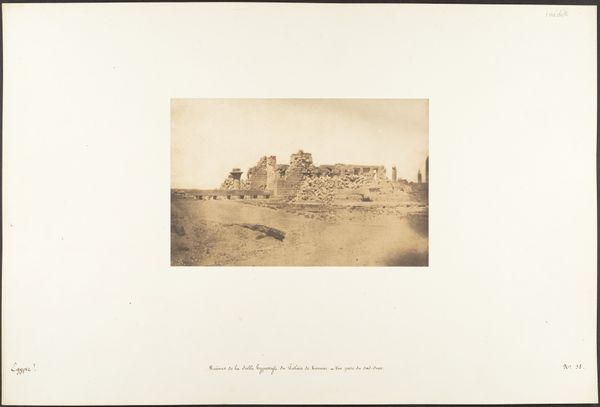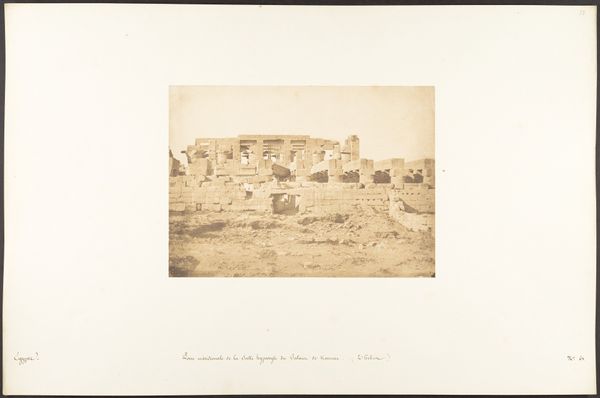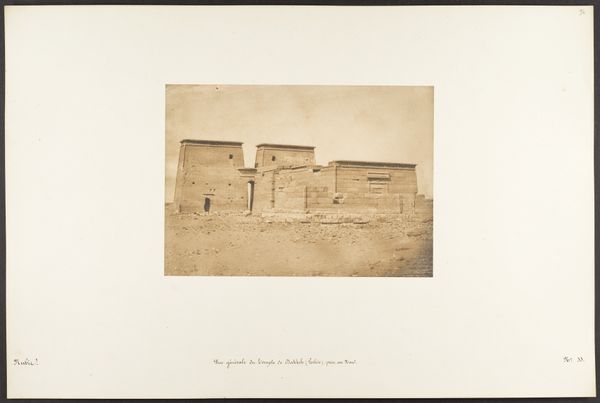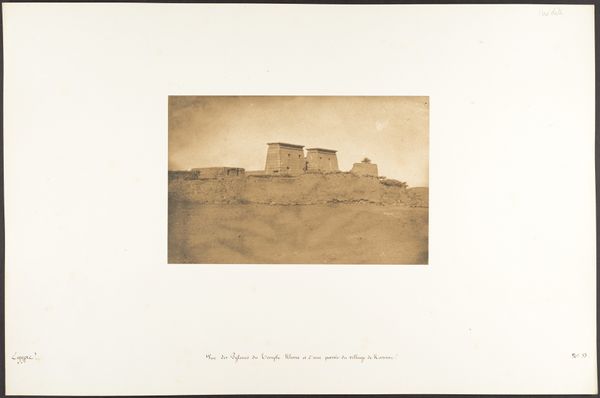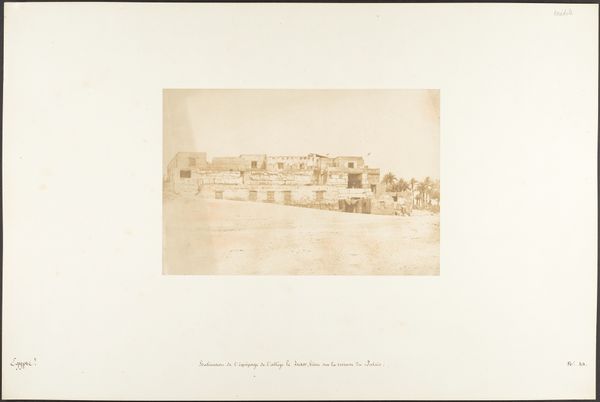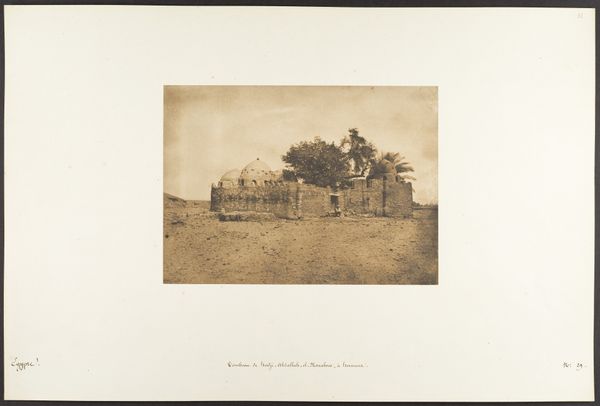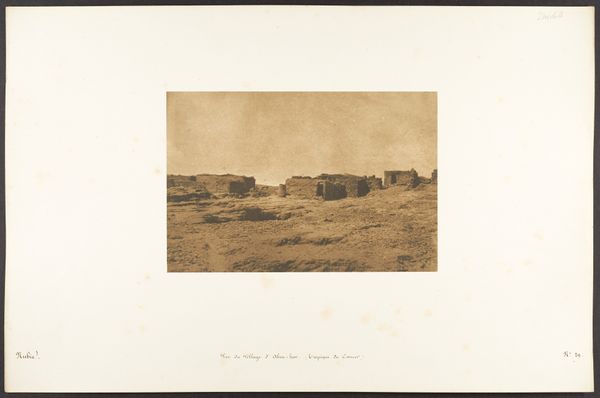
Vue d'une Mosquée ruinée près de Bab-Saïda, au Kaire 1849 - 1850
0:00
0:00
photography, architecture
#
landscape
#
photography
#
cityscape
#
islamic-art
#
architecture
Dimensions: Image: 6 1/4 × 8 9/16 in. (15.8 × 21.8 cm) Mount: 12 5/16 × 18 11/16 in. (31.2 × 47.5 cm)
Copyright: Public Domain
Curator: Maxime Du Camp created this albumen print titled "Vue d'une Mosquée ruinée près de Bab-Saïda, au Kaire," sometime between 1849 and 1850. It resides here at the Met. Editor: Well, it's definitely seen better days, hasn't it? The faded sepia tone gives it this ghostly, dreamlike quality. I imagine a forgotten place slowly returning to the earth. Curator: Exactly, but let's also consider the material conditions that produced it. Early photography was labor-intensive. Each print would be different because it would be made manually and by using unstable chemicals and complex technical apparatus. And because albumen was made with egg whites, the number of prints depended in part on access to eggs. It represents a specific era of material constraint within photographic history. Editor: I can feel that weight. But even within those constraints, look at the light! It catches those crumbling walls, gives them this almost tangible texture. You can practically feel the heat radiating off the stone. Curator: Precisely. The social context is key. Travel to these places at the time was costly and made easier by technological innovation, such as steamships and trains, creating opportunities for exploration and documenting the ancient world. These images were valuable because the sites depicted may have not been seen by people in Europe or the United States at the time. Editor: It makes me think about colonialism and our impulse to capture what's not ours. Was Du Camp aware of that power dynamic, or just enraptured by the ruins? Perhaps a little of both? Curator: Certainly both forces shaped the work. It's naive to suggest otherwise. Think about the consumption of these images—they would circulate widely through albums, books, and other forms. Editor: Makes you wonder who ended up owning them. So much history embedded in one still moment. Curator: Yes. By investigating its materials, circulation, and social and political influences, we are better placed to see a photograph's multifaceted significance. Editor: Thanks, that gives me a more granular lens to peer into its heart. The ghostly ruins resonate a bit differently now.
Comments
No comments
Be the first to comment and join the conversation on the ultimate creative platform.
